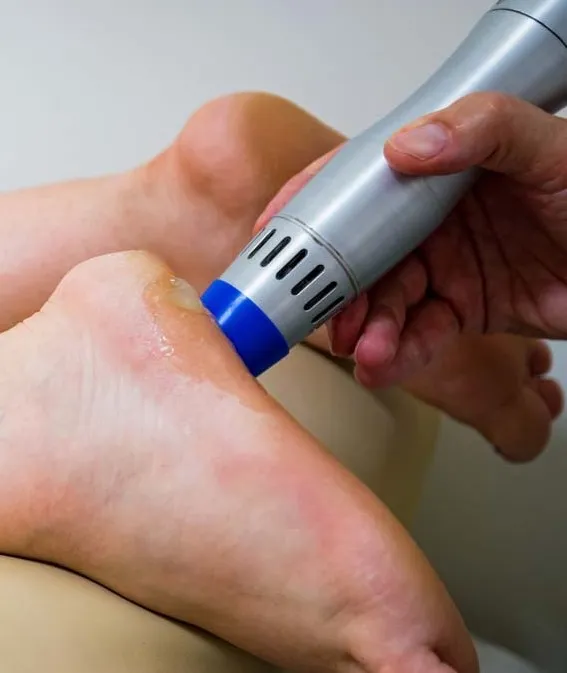Foot pain can impact your daily life significantly, making it hard to walk, exercise, or even stand comfortably. If you’ve been struggling with persistent issues, visiting a podiatrist could be the key first step toward relief and recovery. Here’s information on what you need to know about podiatry and what to expect from your first appointment:
What Does a Podiatrist Do?
A podiatrist is a medical specialist who focuses on diagnosing and treating conditions related to the feet and ankles. They undergo extensive training and education to address everything from minor foot pain to complex conditions like fractures or chronic issues, like diabetes-related neuropathy. Podiatrists play a large role in treating foot health conditions by relieving discomfort, enhancing mobility, and addressing long-term foot health. These professionals often work closely with other specialists, including orthopedic doctors and physical therapists, to provide comprehensive care. Their expertise enables them to quickly identify and treat a variety of ailments through tailored solutions that address each patient’s specific needs.
How Do Podiatrists Diagnose and Treat Foot Conditions?
Expert diagnosis and effective treatment are at the core of a podiatrist’s role. Foot and ankle problems vary widely, so podiatrists use a range of diagnostic tools and treatment plans to address each condition. These tools include bunions, plantar fasciitis, ingrown toenails, and heel pain. Some other specific issues they address are:
Neuroma
A neuroma refers to a thickened nerve tissue in the foot, often triggered by irritation or injury. This benign growth of tissue typically causes pain or numbness between the toes. Podiatrists may recommend footwear adjustments, orthotics, or, in some cases, minor surgical procedures to relieve the pressure on the nerve.
Gout
Gout is a form of arthritis caused by the build-up of uric acid crystals in the joints. It usually affects the big toe, creating intense pain and swelling. A podiatrist can help manage this condition by suggesting dietary changes, prescribing medications, or collaborating with your primary care provider for comprehensive treatment.
Achilles Tendon Injuries
Tendonitis in the Achilles tendon is common among athletes and individuals with active lifestyles. It causes pain and stiffness in the back of your leg or near the heel. Podiatrists use physical therapy, orthotics, and anti-inflammatory treatments to facilitate healing and prevent further injury.
Neuropathy
Patients with diabetes are particularly susceptible to peripheral neuropathy, which can result in numbness or tingling in the feet. Injury and certain medications can also cause nerve damage concerns. Podiatrists help manage neuropathy through regular foot exams, wound care, and custom-made orthotics designed to provide additional support.
What Does a First Visit Look Like?
Your initial trip to the podiatrist is typically a straightforward process. On your first visit, your podiatrist will begin by discussing your medical history. It’s helpful to provide details about any prior injuries, surgeries, or health conditions that might contribute to your foot pain. During the examination, they’ll evaluate your feet, toes, and ankle structure. This may involve assessing your walking pattern, testing range of motion, or using imaging tools like X-rays to diagnose underlying issues.
Once your podiatrist identifies the problem, they’ll outline a tailored treatment plan. This might include physical therapy, medications, footwear recommendations, or other interventions to address your specific needs. Your podiatrist is there to provide answers and reassure you throughout the process, so ask questions and share your concerns during your visit.
Visit with a Podiatrist Today
Podiatrists have the knowledge, tools, and treatment strategies to help you find relief and regain mobility. Whether you’re dealing with a minor ailment or a complex condition, taking that first step to see a podiatrist is key to improving your health. Schedule your visit today.





Leave a Reply